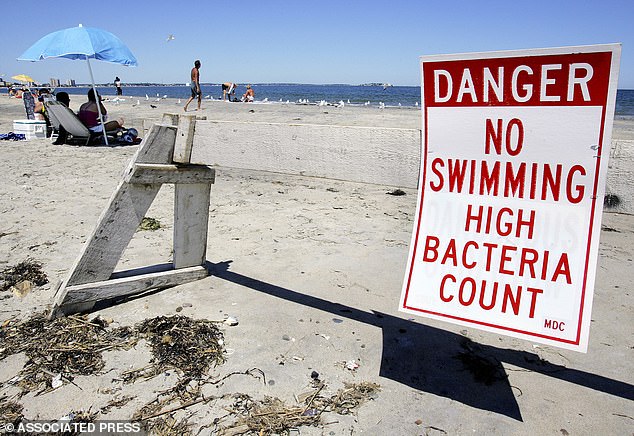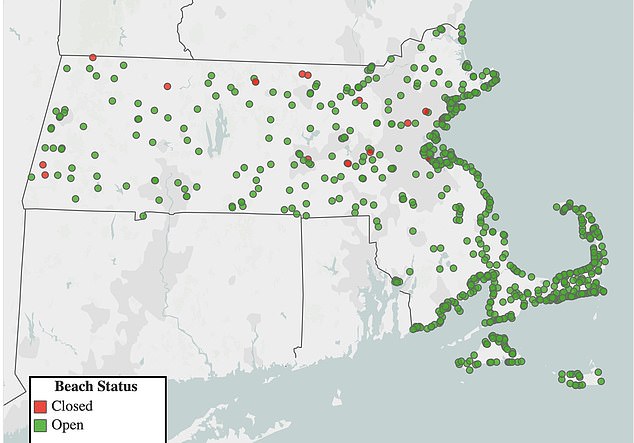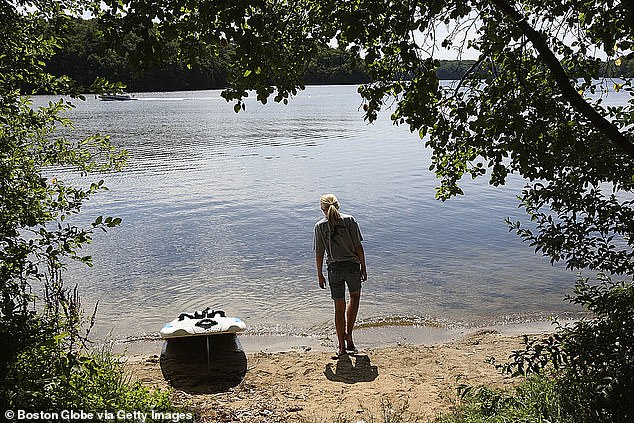Nearly 20 beaches in Massachusetts have closed due to excessive bacteria in the water, according to the state Department of Public Health (DPH).
A report from DPH’s Interactive Beach Water Quality Panel on Tuesday found that 16 beaches were unsafe for swimming due to high levels of bacteria, exceeding acceptable limits.
The dashboard is updated twice a day, at 9:30 a.m. and 12:30 p.m.
Two other beaches were also closed due to harmful algae blooms or other unspecified reasons.
“(The dashboard) will tell you which beaches are open or closed,” said the dashboard, run through Mass.gov. “If a beach is closed, do not swim or enter the water at that location to avoid the risk of illness.”
Nearly 20 beaches in Massachusetts have closed due to excessive bacteria in the water, according to the state Department of Public Health (DPH).

A report from DPH’s Interactive Beach Water Quality Panel found that 16 beaches were unsafe for swimming due to high levels of bacteria, exceeding acceptable limits.
Among the closed beaches are popular spots such as Lynn Shore Beach, Wollaston Beach in Quincy and Hopkinton Reservoir in Ashland.
The DPH warned that swimming in these ‘unsafe waters’ could lead to health problems, including illnesses related to digestion, breathing, skin and even flu-like symptoms.
These closures come just over a week after the Department of Conservation and Recreation kicked off the summer season by opening 81 state beaches for Memorial Day weekend.
Unfortunately, rain appears to be to blame for recent beach closures, according to the DPH, as it can cause increased bacteria levels in the water.
However, the department also said other reasons for closures may include harmful algae blooms, malfunctioning septic systems or animal waste contaminating water.
Beaches will reopen for swimming as soon as bacteria levels return to safe levels, according to the DPH.
Of the closed beaches, 14 are managed by the Department of Conservation and Recreation (DCR).
They take water quality seriously and test weekly during the summer season, starting the week before Memorial Day and continuing through Labor Day.
These tests measure bacteria levels to ensure the safety of swimmers.
Damon Pond Beach in Ashby, both the main and upper beaches of Hopkinton Reservoir in Ashland and Mauserts Pond in Clarksburg are temporarily closed.
Additionally, Old Maid’s Park in Great Barrington, Greenfield Municipal Swimming Beach and Lynn Shore Beach are closed.

Pictured: Map of beach closures in Massachusetts
Wollaston beaches in Channing and Sachem Street in Quincy are also closed. Other closures include Pearce Lake in Saugus and Beamans Pond for day use and camping in Templeton.
Pearl Hill Pond Beach in Townsend, Shannon Beach in Winchester and Lake Quinsigamond-Regatta Point Beach in Worcester are closed. All of these beaches are managed by the Department of Conservation and Recreation (DCR).
Additionally, Lake Mansfield in Great Barrington is closed for other reasons and the Cochituate State Park (Natick) beach is closed due to harmful algae blooms.


